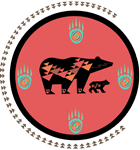Together with Center for Native Child and Family Resilience (CNCFR) staff, a group of experts in cultural resilience, Tribal child welfare, and trauma-informed practice reviewed the current trauma-informed care literature and existing programs with the intention of creating a trauma-informed training specifically for use in Tribal child welfare (TCW) programs. They set out to create a training that would address current gaps in programming while building on the existing knowledge base. After reviewing the materials, the group discussed the strengths and gaps in what they found and outlined their findings. Through these discussions, the group noted the extensive focus on trauma in the research and the many trauma-informed programs and practices that already exist. The workgroup decided that instead of centering on trauma, they wanted to create a training that centers and builds upon the resilience in the community. They created a training that promotes and centers the healing and wellness of individuals, families, and communities—and that encourages the community to build their own vision for a resilience-oriented Tribal child welfare organization.
A central component of this resilience-informed care training is its strength-based, community-driven approach. It recognizes that all involved—the organization, the community, and the individual—have unique strengths. It encourages the user to think in terms of the strengths and resources already available and then work through the modules with an eye toward understanding how the examples are relevant to and differ from their own community. That is, the examples are just examples designed to highlight key insights, but the examples might not be directly applicable to every agency’s or staff member’s situation. For example, a TCW organization with 35 staff has different resources to work with than an organization of 3 staff. The training recognizes and embraces that there are many ways to accomplish the same end: flourishing, resilient Native children and families. Training users should not ask, “How can I reproduce the example?” but rather, “What resources do I have available to do something that would make a good example for my community?” The training should be used as a schema for building the resilience the community envisions using the resources the community has.
Resilience-Informed Care training covers:
- Training Overview
- Module 1 — Resilience Informed Care
- Module 2 — Community Dialogues
- Module 3 — Outcomes
- Module 4 — Workforce
Click here to read the RIC Facilitation Guide, which complements the training by providing essential information about resilience-informed care, including potential implementation and evaluation processes.


